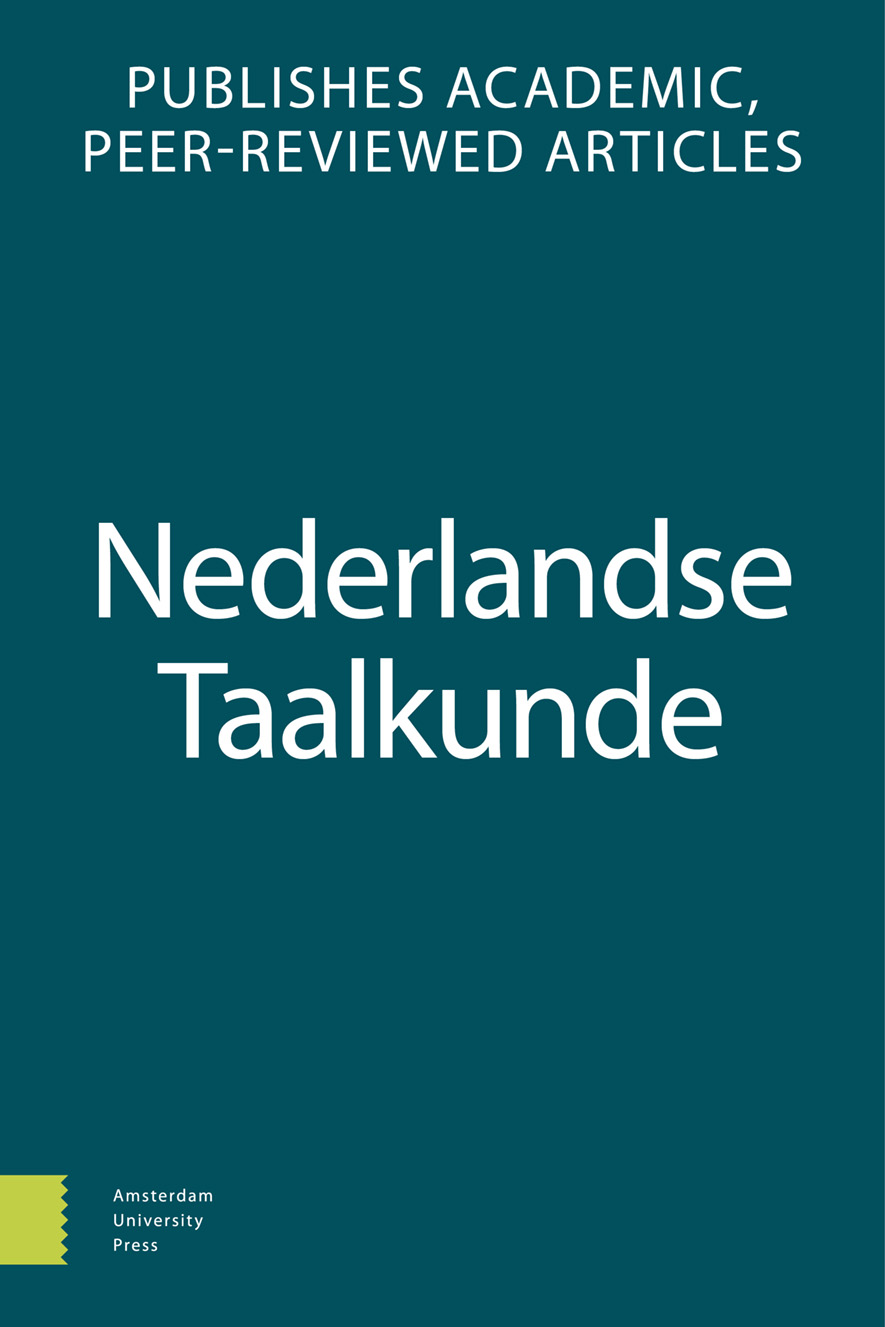- Home
- A-Z Publications
- Nederlandse Taalkunde
- Previous Issues
- Volume 26, Issue 3, 2021
Nederlandse Taalkunde - Volume 26, Issue 3, 2021
Volume 26, Issue 3, 2021
Language:
English
-
-
oa An acoustic-phonetic study of retraction of /s/ in Moroccan Dutch and endogenous Dutch
More LessAuthors: Sanne Ditewig, Laura Smorenburg, Hugo Quené & Willemijn HeerenAbstract In Moroccan Dutch, /s/ has been claimed to be pronounced as retracted [s] (towards /ʃ/) in certain consonant clusters. Recently, retracted s-pronunciation has also been attested in endogenous Dutch. We tested empirically whether Moroccan Dutch [s] is indeed more retracted than endogenous Dutch [s] in relevant clusters. Additionally, we tested whether the inter-speaker variation of /s/ is smaller between Moroccan Read More
-
-
-
oa 150 years of written Dutch
More LessAuthors: Jozefien Piersoul, Robbert De Troij & Freek Van de VeldeAbstract In this article, we present a new corpus spanning 163 years of written Dutch. This Dutch Corpus of Contemporary and late Modern Periodicals (Dutch C-CLAMP) comprises 47,738 part-of-speech tagged articles published in Dutch periodicals from 1837 until 1999, totaling approximately 200 million tokens in size. We explain the measures we took to overcome the shortcomings of existing corpora of historic Read More
-
-
-
oa Mapping the spread of Dutch non-standard language use on corporate Facebook pages
More LessAuthors: Mathias Seghers, Bernard De Clerck & Chloé LybaertAbstract This paper examines the online spread of non-standard Dutch in an unexplored communicative setting, i.e. complaint management on corporate Facebook pages. Based on a self-compiled corpus of consumer-company interactions taken from 6 corporate Facebook pages, we investigate to what extent typical features of informal social media communication spill over into more sensitive contexts of complaint Read More
-
-
-
oa De constructie ‘Twee typen subject’
More LessAuthors: Ina Schermer & Hans BroekhuisAbstract This paper discusses two binominal soort-constructions: twee typen subject ‘two types of subject’ and twee typen subjecten ‘two types of subjects’. The choice between singular or plural subject(en) is contextually determined and reflects a difference in meaning of the second noun. The combination of a plural first noun and a singular second count noun is infrequent, due to the special interpretation assigned to the si Read More
-
Most Read This Month
Article
content/journals/13845845
Journal
10
5
false
en

Most Cited Most Cited RSS feed
-
-
oa Goed of fout
Authors: Hans Bennis & Frans Hinskens
-
- More Less

